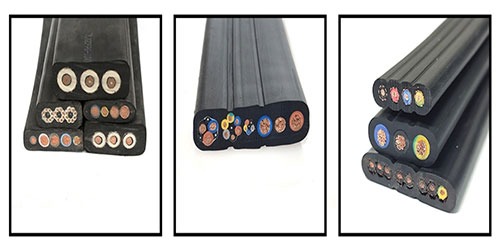Maintenance Tips for Long-Lasting Flexible Cables
Flexible cables are a vital component in many applications, from industrial machinery to consumer electronics. Ensuring these cables remain in optimal condition is crucial for maintaining performance and preventing costly downtime. Here are some essential maintenance tips for long-lasting flexible cables.
9/26/20242 min read


1. Regular Inspections
Routine inspections are key to identifying potential issues before they escalate. Check for signs of wear and tear, such as fraying, cracking, or discoloration. Pay close attention to connection points, as these areas are often subject to stress. Conducting regular inspections will help you catch problems early, ensuring the longevity of your flexible cables.
2. Proper Handling
Flexible cables are designed to bend and move, but improper handling can lead to damage. Always follow manufacturer guidelines when installing or using flexible cables. Avoid yanking or pulling on cables excessively, and ensure they are routed in a way that minimizes stress on connection points. Proper handling will extend the lifespan of your flexible cables.
3. Cleanliness Matters
Dirt, dust, and debris can accumulate on flexible cables, affecting their performance. Regularly clean cables with a soft, damp cloth to remove any contaminants. For areas with heavy buildup, use a mild detergent solution, but ensure the cables are completely dry before use. Keeping cables clean can prevent overheating and ensure optimal conductivity.
4. Avoid Overloading
Each flexible cable is designed to handle a specific load. Overloading cables can lead to overheating and eventual failure. Be sure to check the specifications of your flexible cables and ensure they are used within their rated capacity. This practice not only extends the life of the cables but also enhances safety.
5. Store Properly
When not in use, proper storage of flexible cables is essential. Avoid coiling cables too tightly, as this can cause kinks and damage the internal structure. Instead, use cable ties or reels to store cables in a manner that prevents bending or twisting. Proper storage will help maintain the integrity of your flexible cables over time.
6. Environmental Considerations
Flexible cables can be sensitive to environmental conditions. When using cables in outdoor or industrial settings, consider factors such as temperature, humidity, and exposure to chemicals. Choose cables designed for specific environmental conditions to enhance durability and performance. Understanding the environment where cables will be used is vital for maintaining their longevity.
Conclusion
Maintaining flexible cables is crucial for ensuring their longevity and performance in various applications. By implementing regular inspections, proper handling, cleanliness, and mindful usage, you can significantly extend the life of your flexible cables. These maintenance tips will not only prevent costly downtime but also enhance the overall efficiency of your systems.
